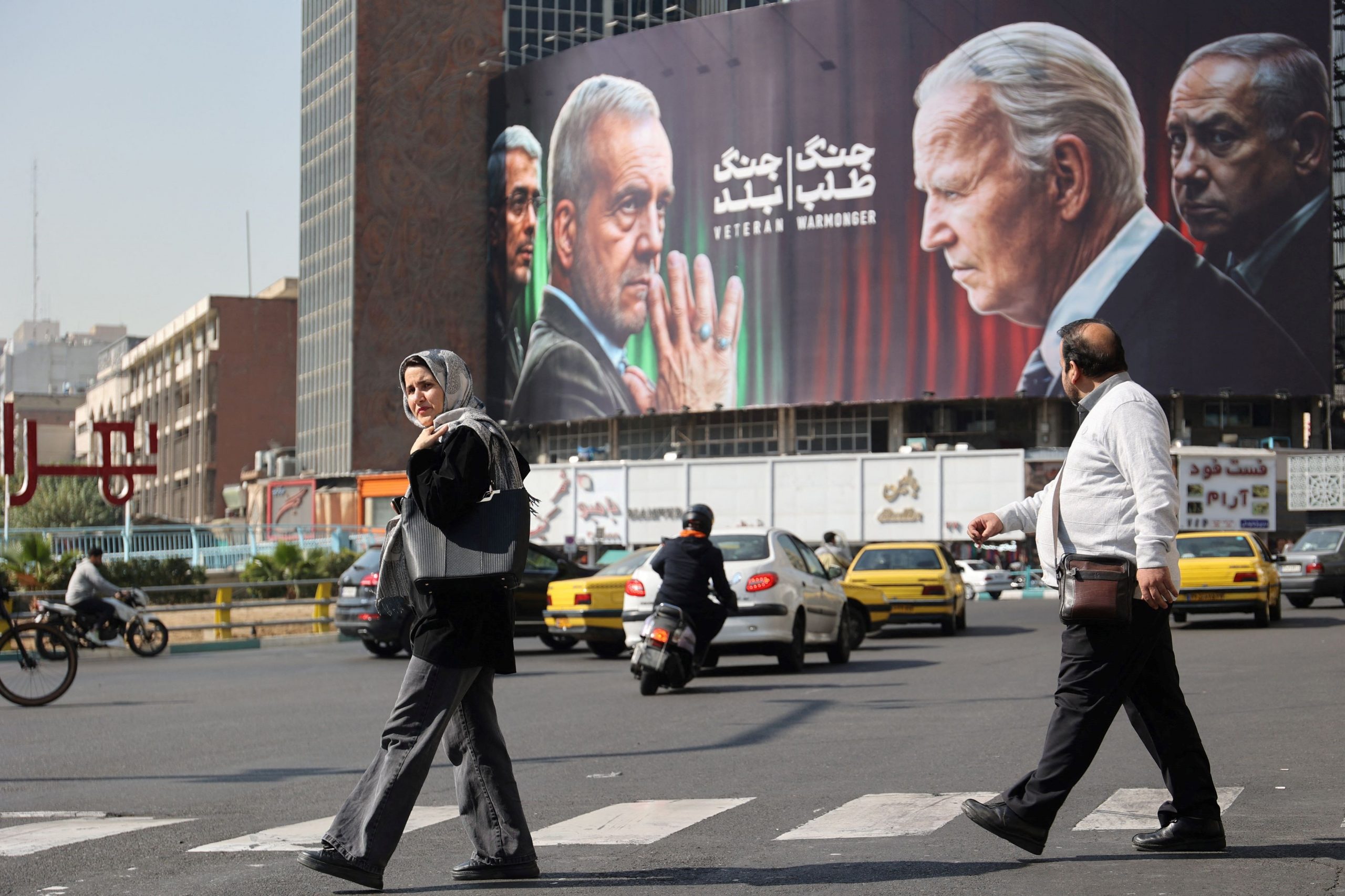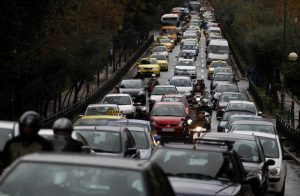WASHINGTON—Israel’s punishing airstrike against Iran last month shredded Tehran’s strategic air defenses and severely damaged missile production facilities, leaving it badly exposed to future attacks, U.S. and Israeli officials said.
That has sharply raised the risks for Iran should it follow through on threats to carry out another round of missile strikes against Israel in coming days, current and former officials said.
On Oct. 26, Israel struck key facilities for producing solid-fueled missiles at the sprawling Parchin military site near Tehran and at the Shahroud ballistic missile and space center run by Iran’s elite Islamic Revolutionary Guard Corps, commercial satellite photos have shown. It also knocked out Russian-made S-300 missile defense systems.
Tehran still has hundreds of missiles that can reach Israel and do significant damage should they penetrate Israeli defenses, according to Western officials. But the damage to Iran’s air defenses would make it easier for Israel to retaliate against even more sensitive targets, including the country’s leadership, energy infrastructure and perhaps nuclear sites. That is a risk Tehran will have to factor in.
“The operational debate in Iran is likely dominated less by what can Iran do but how will Iran defend itself when Israel retaliates,” said Norman Roule, a former Middle East specialist at the Central Intelligence Agency. “This is unlikely to be an easy discussion and may produce sharp debates within Iran’s senior leadership.”
Israel hit around 20 targets last late month, staying within the red lines Washington had pushed for the attack. While Iran initially played down the attack, some senior Iranian officials are now talking about mounting an aggressive retaliation.
“We will give an unimaginable response to the enemy,” Gen. Hossein Salami, the head of the Revolutionary Guard, said this past week.
The Israeli attack was carried out in three waves, beginning with Iran’s strategic air defenses. Strikes landed within about 7 yards of S-300 batteries, rendering the Russian-made defense systems inoperable. It could take several months for Iran to fix or replace those systems if they receive Russian assistance, a regional security official said.
The next wave arrived about 80 minutes later, focusing on ballistic missile production. The final wave, an hour later, struck radars, headquarters, antennas and some missile launchers.
The operation was intended to demonstrate to Iran that the Israelis could strike all over the country. “We wanted them to realize they were exposed,” a regional security officer said Friday.
Some U.S. officials said that Iran’s production of solid-fueled missiles could be delayed by a year or more.
Israel’s main targets at the missile facilities were so-called planetary mixers, which are used to blend components for solid rocket fuel used in its most advanced missile. The mixers can’t be easily replaced, analysts said.
While most of Iran’s missiles are liquid-fueled, the attack delivered a blow to some of Iran’s most valued weapons programs
Israel hit around a dozen mixing facilities at three sites, most of which were destroyed. In addition to Parchin, two buildings at Iran’s ballistic-missile complex at Khojir and buildings at the Revolutionary Guard’s Shahroud space center site were damaged, said Fabian Hinz, research fellow for defense and military analysis at the International Institute for Strategic Studies.
Shahroud has long been used to produce solid propellant fueled space launchers, but there is strong evidence that the Revolutionary Guard has also been using it to build ballistic missiles. There is one solid propellant facility Israel apparently didn’t hit—possibly because it was producing solid propellant motors for shorter-range missiles, Hinz said.
Israel’s strikes, according to experts and former officials, had a second potentially significant impact, facilitating a future strike on Iran’s nuclear facilities by making it less risky to operate in Iranian airspace.
“I think Iran is the most vulnerable they have been in many years to another Israeli attack,” said retired Gen. Frank McKenzie, the former commander of U.S. Central Command.
The Revolutionary Guard, which has lost senior officers in previous Israeli airstrikes in Syria and Lebanon, is eager to strike back, according to regional analysts. But other Iranian officials are likely to be more cautious.
The degree of precision Israel showed in its attacks underscored to Iran’s leadership how vulnerable the country’s military and civilian assets and infrastructure have become, analysts said.
“Israel not only opted to destroy the defensive shield protecting some of Iran’s nuclear and oil installation, but also to reinforce the message that Iran was so deeply penetrated that Israel would know precisely where and how to hit effectively Iran’s most sensitive missile and nuclear weapons related facilities,” said Ariel Levite, a senior fellow in the nuclear policy program at the Carnegie Endowment for International Peace and a former Israeli official.
Though Israel stayed away from Iran’s nuclear sites in last month’s attacks, it did hit a building at Parchin that had been used by Iran to conduct suspected nuclear weapons research, satellite imagery showed.
The strikes on S-300 air defense batteries have made it easier for Israel to hit Tehran’s nuclear sites if it decides to do so in future attacks, said Michael Horowitz, the Israel-based head of intelligence for the consulting firm Le Beck.
“These phased attacks are complex, as airplanes can’t stay in the air forever and would have to come back home at some point. Now, phase one of the attack is done—this makes things easier for any future attack,” he said.
With Iran’s most advanced missile defenses out of operation, Israel could move aerial refueling tankers closer to the border, which would enable its warplanes to carry heavier payloads and less fuel, Horowitz said.
Iran’s space program is considered by Western officials as a pathway for it to develop intercontinental missiles, giving its engineers experience in developing powerful booster rockets that could be used for longer-range missiles.
Solid-propellant missiles are considered more reliable than those with liquid fuel because they can be stored far longer and are less volatile. Solid-fueled missiles are much more practical to use in a swift, large-scale mass attack, such as the one Iran launched against Israel on Oct. 1.
The Revolutionary Guard unveiled the Kheibar Shekan missile in 2022. Last year, it inaugurated the Fattah-1. The Guard said the missiles have a range of around 1,400 kilometers, or about 870 miles, putting Israel in their reach.
Israel also hit two long-range Iranian radars near the Iraqi border and carried out a limited strike around the Abadan refinery in a possible warning about future hits on oil facilities.



